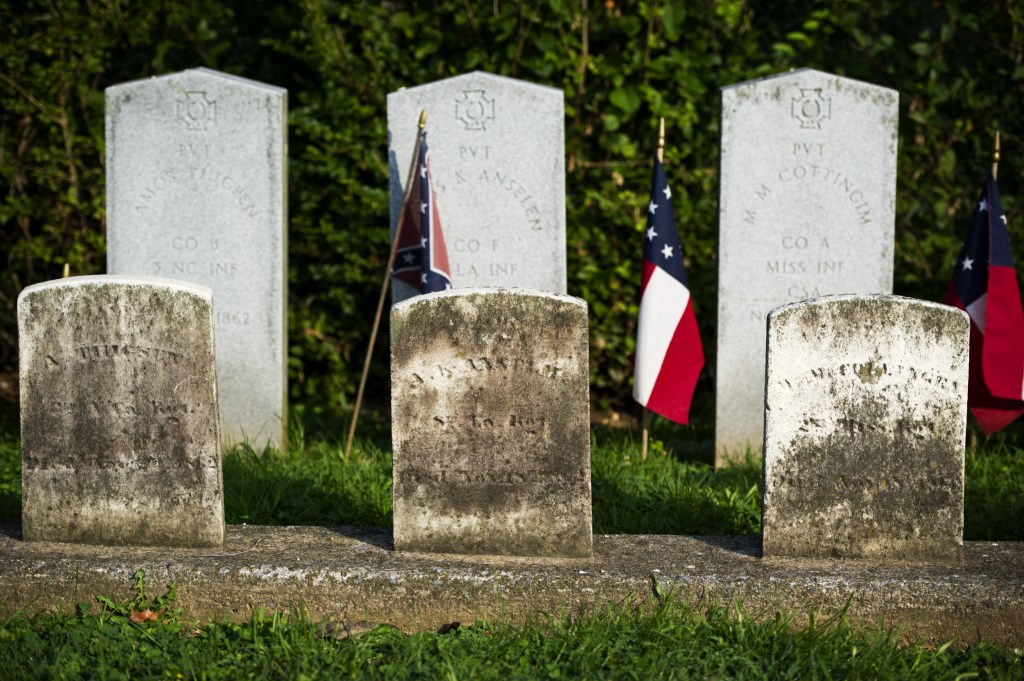In 1960, I became consumed with the Civil War as America approached the 100th Anniversary of its beginning. I was 8 years old, living on Long Island, and had already read Bruce Catton’s “A Stillness at Appomattox,” written in 1952. I would go on to read eight more of his books over the years, most of them more than once.
In those early years, the Civil War was interesting and exciting to me as a young white boy, mostly because of the brilliance of Bruce Catton whose extensive research made the war come to life. His descriptions of the people and the events were so real to me. I could feel the anguish of wounded Union soldiers, traveling the torturous 17 miles from the Wilderness to Fredericksburg in rickety wooden ambulances.
I continued to read Catton and others after moving to Maryland for college in 1970, and over the ensuing years, I traveled to many of the Civil War battlefields in Maryland, Virginia, Pennsylvania, Tennessee and Georgia. I learned a great deal about the Civil War — what happened, where it happened and how many casualties there were. I learned who won and who lost each of the engagements.
But what I never really considered was why: Why was the war fought at all? Why did 622,000 Union and Confederate soldiers have to die? Why did several hundred thousand more have to suffer from crippling war wounds for the rest of their lives?
As the country continues to grapple with deep divisions based on race and class, and pundits explore whether we’re headed toward a second Civil War, of the kind shown in Alex Garland’s new dystopian movie, I’ve been thinking about these questions and clarifying my understanding of the Civil War in today’s context.
I put myself in the place of those families who grieved the loss of fathers, brothers and sons — North and South. And thought, for what? Cheap labor? Why are we not outraged even today over the ignominy of the Confederate cause?
Simply put, the war was fought to keep enslaved Black people in bondage so that white Southern planters could profit from their labor. Those in power in the South were willing to sacrifice a generation of their own young men in order to maintain slavery. They saw their way of life as being threatened, and they saw their power waning in the halls of Congress. That led them to secession and war.
Slavery was threatened in the United States because enough people in the North and West recognized that enslaving human beings for profit was wrong. The Abolitionist movement had officially begun in 1830, but a gradual awakening among white people had started many years earlier. As far back as the Colonial period, anti-slavery societies formed by Quakers sought to abolish the heinous practice.
What was promoted and marketed to children like me in the early 1960s was a whitewashed version of the dark, ugly reality that was the American Civil War. The war wasn’t about two opposing forces that both fought for a noble cause — only one side fought for a noble cause. Despite all the lies of the last 160 years to the contrary, one side fought to enslave human beings.
A concerted program of disinformation began shortly after Lee’s surrender at Appomattox Court House. Southern historians wrote that the war was simply a heroic defense of the Southern way of life against the overwhelming forces of the North. Enslaved people were basically happy, and the war was not about slavery. But documents like the Confederate Constitution and the Declaration of Secession in several southern states told a different story. In these documents, the Confederate leaders made it abundantly clear that they fought to maintain slavery.
All their lies were further compounded by the emergence of a very powerful group of women — the United Daughters of the Confederacy (UDC) — in 1894. They were largely responsible for the proliferation of statues throughout the South, and even some in the North, that honored the “heroes” of the Confederacy. Many of these statues were built during the Jim Crow era to reinforce white supremacy. The UDC also sought to teach the next generation these lies that whitewashed the horror of slavery and the reasons for the war by regulating the content of school textbooks in the south.
Also, streets, schools, parks, even U.S. military bases were named after Confederate generals as a way of normalizing their traitorous deeds. How could this be? They were all traitors — yes, even Robert E. Lee. In recent years, many of these statues have been taken down as sanity and reason slowly win. But then there are still places like Shenandoah County, Virginia, where the school board this month voted to reinstate Confederate names that had been removed from schools.
What I have never understood was why there has been no voice of reason in the South demanding to know why their ancestors allowed these wealthy planters and politicians to send their sons off to fight. Thousands gave up their own children so the rich could maintain the wealth they built on the backs of enslaved people, along with the white supremacist power structure. That’s what the Civil War was really about.
Stephen Milmoe (srmilmoe@hotmail.com) is a retired teacher.
